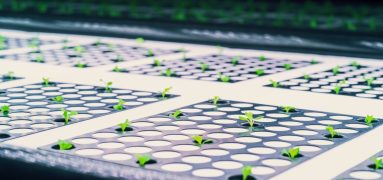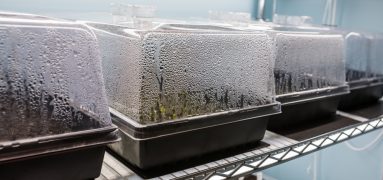Easy and Profitable Indoor Crops

FOUR CROPS TO SET YOU UP FOR SUCCESS
Whether you are a commercial producer or are starting out as a backyard grower, indoor agriculture is a great way to grow reliably high-quality produce. Not only is indoor growing easy and affordable for the at-home grower, but the market for indoor farming is expected to have a compound interest growth rate (CAGR) of 10.6% for the 2023-2029 period, and it’s one of the US’s fastest growing industries.
Indoor growing is where it’s at! With that in mind, let’s look at the pros and cons of four of the most popular, profitable, and up-and-coming crops to grow indoors.
Microgreens
There’s always a nutritional fad going around the health community, and microgreens are the latest trend.
But what are microgreens, exactly? They are common herbs and vegetables such as radishes, basil, carrots, and peas that are harvested during the seedling stage.
Microbroccoli is a particularly popular type of microgreen because it is both tasty and nutritious—even more so than regular broccoli. The broccoli microgreen market is expected to reach $398.5 million by 2031.
Pros to growing microbroccoli indoors:
- Grow very quickly
- Not impacted by viral diseases
- Require very little space to grow while producing a high yield
- Sells well at farmers’ markets
Cons to growing microbroccoli indoors:
- Susceptible to bacterial diseases such as salmonella and listeria if incorrectly handled
- Thrives in a specialized climate that requires close attention and maintenance—however, this is something that TC Controls can help with!
Mushrooms
An unexpected but valuable indoor crop is mushrooms. In fact, in 2023 the global mushroom market reached over $68 billion dollars, and is expected to grow at a CAGR of 8% until 2032.
White button mushrooms are a popular choice for growing indoors, as they are both easy to grow and versatile to cook with.
Pros to growing button mushrooms indoors:
- Low cost on lighting and heating—mushrooms thrive in dark, cool environments
- Require very little attention
- Low risk of pests
- Popular at farmers’ markets
Cons to growing button mushrooms indoors:
- Mushrooms that are exposed to natural sunlight are typically more nutritious and better-tasting than mushrooms grown indoors
- Susceptible to mold and fungal diseases such as dry bubble, cobweb, and green mold.
Tomatoes
Tomatoes are one of the most popular crops to grow indoors—and for good reason. Greenhouse grown tomato crops produce a high yield of quality produce year-round, and are boosting the entire tomato market. Tomatoes are also the most popular plant to grow hydroponically, especially because hydroponic grown tomatoes require much less water than when they’re traditionally grown.
There are many different types of tomatoes, all of which have their advantages and disadvantages. You can choose between heirloom, hybrid, determinate, and indeterminate varieties of plants.
Pros to growing tomatoes indoors:
- High, reliable, year-round yield
- Low water usage if grown hydroponically
Cons to growing tomatoes indoors:
- Some breeds must be pollinated (either by hand, by creating airflow, or by keeping bees)
- Some diseases are more common in greenhouse tomatoes, such as bacterial canker, gray mold, and leaf mold.
- Susceptible to defects resulting from growing conditions, such as blossom-end rot, uneven ripening, and sunscald. However, these issues can often be avoided by monitoring and maintaining proper hydration, lighting, and nutrients levels—something that TC Controls can help with!
Berries
Berries are one of the most versatile fruits, and there’s nothing better than being able to grow your own year-round. Plus, the fresh berry market is expected to reach $31.86 billion by 2029.
One berry to keep your eye on is strawberries, as their market is expected to grow at a CAGR of 6.12%.
Pros of growing strawberries indoors:
- Easy to grow in a vertical pot system, saving space
- Protection from predators such as birds
- Low heating costs
Cons of growing strawberries indoors:
- Must be pollinated
- Susceptible to fungal diseases and pests such as mold, root rot, weevils, and aphids
Indoor growing provides the opportunity for growing consistently high-quality produce because you have control over the environment. TC Controls can help ensure that you maintain the best conditions for whatever you’re growing. Contact us today to get started, or to expand your growing capabilities.



